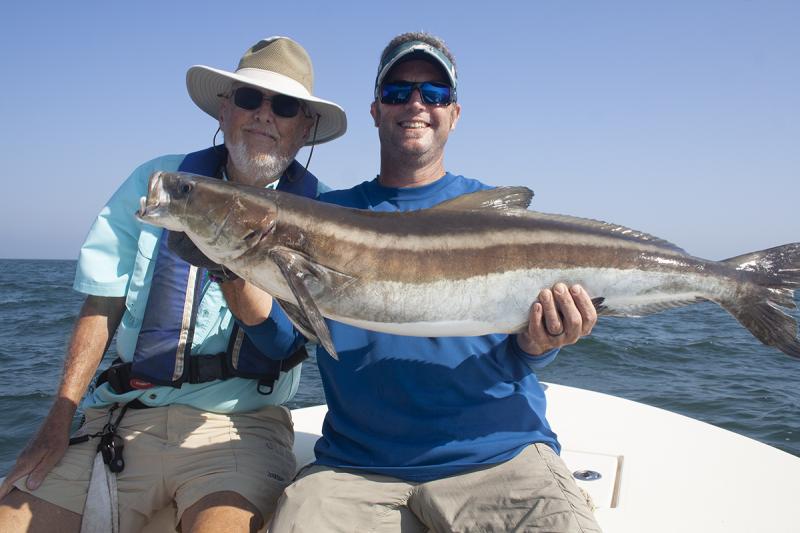Enjoying a family fishing weekend in Virginia Beach
Last weekend, I was in Virginia Beach fishing with my two sons, Ric and Roger. On Saturday, we headed out of Rudee Inlet on Ric’s 20-foot Jones Brothers center console toward Rick’s Wreck, which lies about 17 miles due east of the beach. The east wind had the seas standing up pretty high, and the first wave we hit caused a shock wave to travel from my feet up my legs and my spine to the base of my skull. Fifty years ago, that would have been fine, but my old body just can’t take that kind of abuse anymore. I asked Ric to pick another wreck, and we headed southeast to the 4A Drydock. It was not the smoothest of rides, but at least it was tolerable.
When we arrived, Ric put us on the wreck with no problem, and we started catching sea bass. I was using my new Tsunami Forger lever drag reel and Trophy Series C701H rod with a three-ounce jig. I like to use a jig because I have found jigs attract a larger class of fish. Well, not on Saturday. While Ric and Roger were putting keepers in the box, I was catching some of the smallest sea bass in the ocean. Some of these tiny fish were not much larger than the jig! I even changed from a jig to a top-bottom rig and still caught dinks. My largest sea bass of the day was 11 inches. If someone can explain to me how three men fishing almost side by side can end up with two catching keepers and one catching dinks, I would love to hear that theory.
After awhile, even Ric and Roger were catching dinks, so we moved to another wreck. Here, the dinks were larger, and both Ric and Roger caught flounder. Once again, I failed to put anything in the box.
The wind was dropping out, so we decided to head back inshore toward False Cape and try live bait fishing for king mackerel. Before you can fish with live bait, you have to catch live bait. To this end, we worked the numerous schools of menhaden as Ric tossed his cast net until we had a dozen or so live baits in the live well.
For those who have never slow-trolled live bait for king mackerel, you use a special rig tied with light wire. Most use two small treble hooks, and some use one treble and one single hook. The hooks are placed in the back and the nose of the live bait that is set out behind the boat. Kings are notorious for biting the bait behind the head, so having hooks in the front and back is important.
We slow trolled all the way from False Cape to Dam Neck (about 10 miles) without any interruptions. Both Ric and Roger kept a lookout for cobia as we moved from one school of menhaden to another. Didn’t see any of them either.
We ended the day around 4 p.m. and looked forward to Sunday.
As we cleared Rudee Inlet on Sunday morning, the sea was flat calm. We decided to try for Spanish mackerel and put out small spoons behind planers. After an hour or so and one dink Spanish, we changed gears and began to target cobia.
Once again, Ric used his cast net to secure some live menhaden before we began to run from one school of bunker to the next. Roger and I were armed with spinning rods carrying leadheads and Z-Man tails. Ric ran the boat and had a live eel in a bucket next to him and connected to yet another spinning rod.
When we would get to a school of menhaden, Rog and I would cast to the schools and retrieve the lures very fast. On the first cast, Roger’s rod bent over and we thought he had a cobia. Turns out he had a black-tipped shark. He would go on to catch two more of these critters.
Finally, Roger spotted two cobia on a school of menhaden and both of us tossed our lures in their direction. They didn’t seem interested. Then Ric gave them a shot at the eel and one of the cobia ate it. Ric passed me the rod, I cranked the fish in and Roger netted it. It was a true family affair.
When my boys were growing up, we fished together all the time. Then when we all lived in Virginia Beach, we spent as much time together as possible with them in college and me working.
Now I live here, and Ric is still in Virginia Beach and Roger is in New Jersey. They both have very full lives with work and family, so any time we have to fish together is precious. So it was last weekend.
























































